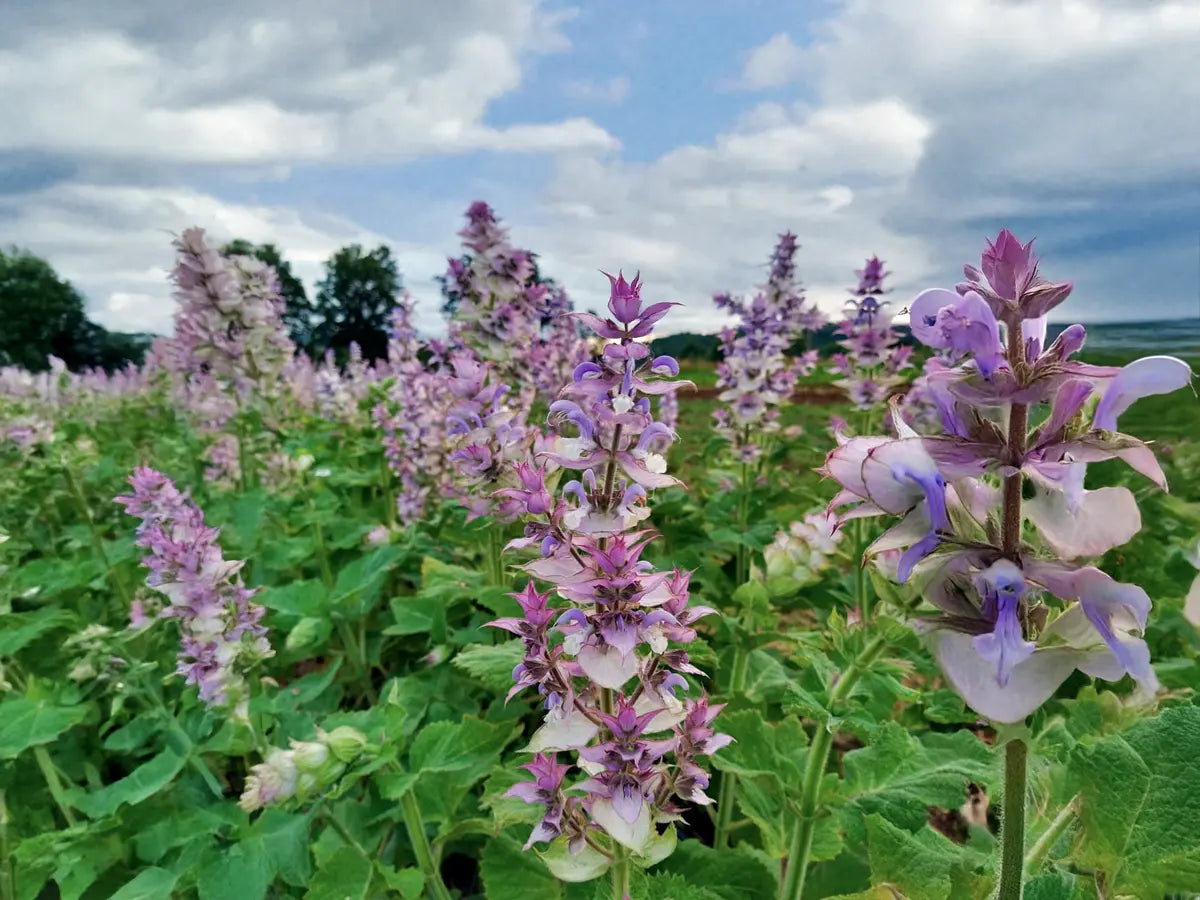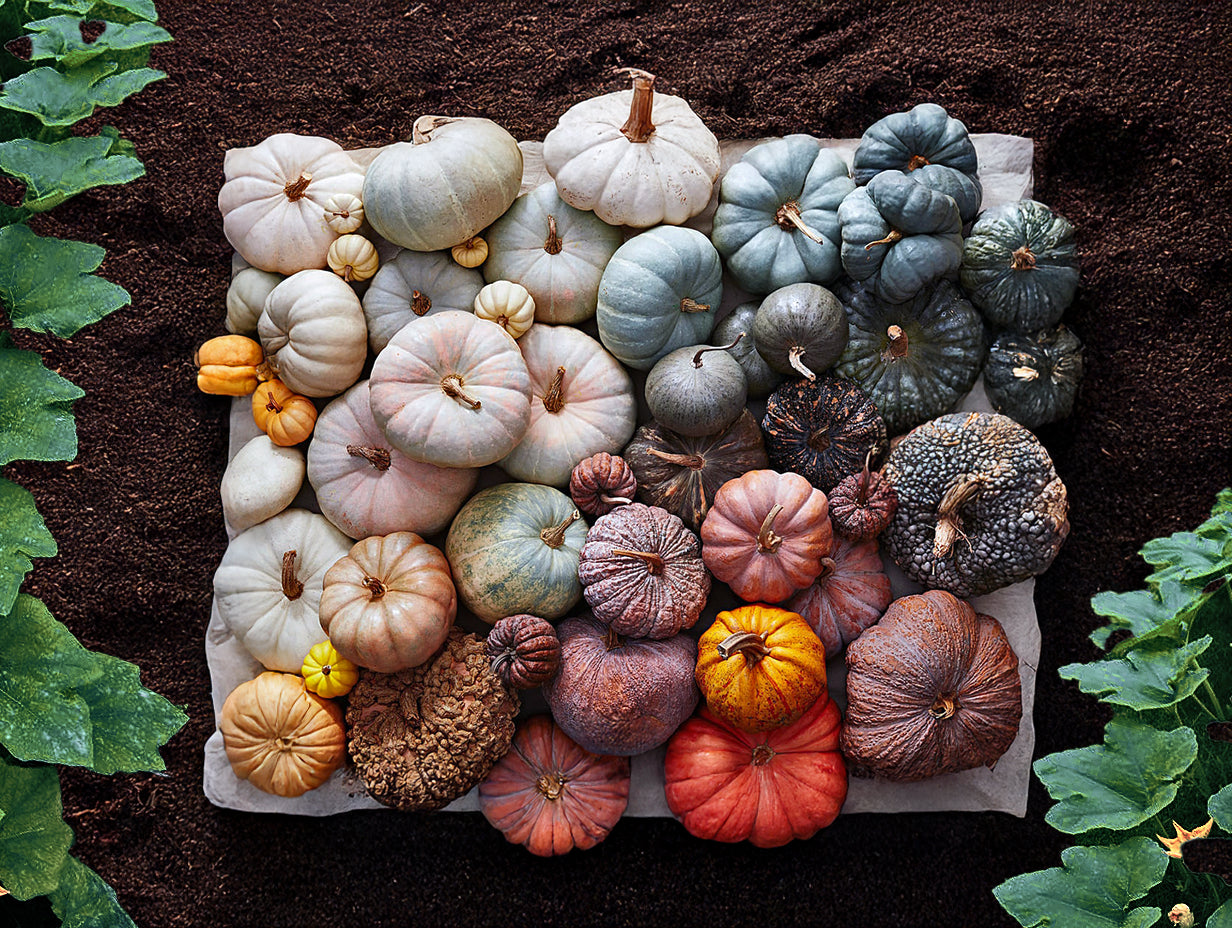Growing a Healthier Garden, Supporting a Sustainable Future
As gardeners, we all share a deep connection with the soil beneath our feet and the seeds we carefully plant each season. But have you ever wondered about the broader impact of choosing organic seeds for your garden? Recent scientific research reveals that this simple choice can create rippling effects that extend far beyond your backyard – influencing everything from soil health to community wellbeing.
The Foundation of Garden Health: It Starts with the Soil
When you plant organic seeds, you're participating in a system that prioritizes soil health – the cornerstone of successful gardening. According to long-term studies by the Rodale Institute, gardens managed with organic practices show 13-28% higher soil organic matter compared to conventional methods. This isn't just an abstract number; it translates directly to your garden's success.
Consider this: for every 1% increase in soil organic matter, your garden can hold an additional 16,000 gallons of water per acre, according to the USDA Natural Resources Conservation Service. In practical terms, this means more resilient plants during dry spells and less frequent watering for you.
But the benefits go deeper. Research published in PLOS ONE by Lori et al. (2017) found that organic soils contain up to 32% more microbial biomass than conventional systems. These microscopic allies help your plants access nutrients, fight diseases, and develop stronger root systems. When you choose organic seeds, you're supporting farming practices that nurture these beneficial relationships from the start.
Biodiversity: Your Garden as a Wildlife Sanctuary
Perhaps one of the most visible benefits of organic gardening is its positive impact on wildlife. A landmark European study published in the Proceedings of the Royal Society B found that organic areas support up to 50% more wild bee species and 35% more pollinators overall. This matters for your garden – more pollinators mean better fruit set and higher yields, particularly for crops like tomatoes, squash, and berries.
The benefits extend beyond bees. Research by Bengtsson et al. in the Journal of Applied Ecology documented a 46% increase in bird species richness in organic landscapes. By choosing organic seeds and following organic practices, your garden becomes part of a larger network of wildlife-friendly spaces that help preserve biodiversity.
Nutrition and Health: Growing Better Food
The question of nutritional differences between organic and conventional produce has been extensively studied. A comprehensive meta-analysis published in the British Journal of Nutrition (Barański et al., 2014) found that organic crops contain 18-69% higher concentrations of certain antioxidants. Organic tomatoes, for instance, have been shown to contain higher levels of vitamin C and beneficial compounds called phenolics (Mitchell et al., 2007, Journal of Agricultural and Food Chemistry).
Furthermore, choosing organic means reduced exposure to synthetic pesticides. The USDA's Pesticide Data Program consistently finds significantly lower pesticide residues on organic produce. While the long-term health implications are still being studied, research published in Environmental Research (Curl et al., 2020) suggests that minimizing pesticide exposure is particularly beneficial for children, pregnant women, and those with compromised immune systems.
Climate Change: Your Garden as Part of the Solution
In an era of climate change, organic gardening offers hope. Long-term trials by the Rodale Institute demonstrate that organic systems can sequester 200-400 kg of carbon per hectare per year more than conventional methods. While your home garden may be smaller, these principles still apply – every organic garden contributes to the solution.
The impact extends to water conservation as well. The improved soil structure in organic gardens reduces runoff and erosion by 20-40%, according to studies published in Nature Plants by Reganold & Wachter (2016). This means more water stays where your plants need it, and fewer nutrients end up in local waterways.
Supporting Sustainable Communities
When you purchase organic seeds, you're supporting farmers who commit to these sustainable practices. According to the USDA Economic Research Service, the organic market has shown consistent growth of 5-7% annually, reaching over $56 billion in sales. This growth reflects increasing awareness of environmental and health benefits, but it also represents real support for farmers who choose sustainable methods.
Research published in PNAS by Crowder & Reganold (2015) shows that organic farmers often receive premium prices (10-40% higher), helping to offset any yield differences and maintain viable small-scale farming operations. By choosing organic seeds, you're helping to sustain a system that prioritizes both environmental and community health.
The Bigger Picture: Seeds of Change
Every garden starts with a seed, and every seed represents a choice. When you choose organic seeds, you're not just planning this season's garden – you're supporting a proven system of agricultural practices that benefit soil health, biodiversity, human health, and climate resilience. The science is clear: organic practices work, and they work well.
Consider this: if the enhanced soil organic matter levels observed in organic systems were achieved across all global croplands, we could sequester hundreds of millions of tons of carbon annually. Your garden alone may not achieve this, but as part of a growing movement toward organic practices, it contributes to meaningful change.
Taking Action in Your Garden
Ready to make a difference? Start with organic seeds for your next growing season. Whether you're planning a few containers of herbs or a full vegetable garden, choosing organic seeds ensures you're supporting sustainable practices from the very beginning of your plants' life cycles.
Remember, every successful organic garden starts with healthy soil. Consider adding compost, using cover crops, and minimizing soil disturbance. These practices mirror those used by organic seed producers and help create the conditions where organic seeds thrive.
Most importantly, know that your choice matters. When you choose organic seeds, you're joining a community of gardeners and farmers who are working toward a more sustainable future – one garden at a time. The science supports this choice, and future generations will thank you for it.
References and Further Reading
1. Baranski, M., et al. (2014). Higher antioxidant and lower cadmium concentrations and lower incidence of pesticide residues in organically grown crops: a systematic literature review and meta-analyses. British Journal of Nutrition, 112(5), 794–811.
2. Bengtsson, J., et al. (2005). The effects of organic agriculture on biodiversity and abundance: a meta-analysis. Journal of Applied Ecology, 42(2), 261–269.
3. Crowder, D. W., et al. (2010). Organic agriculture promotes evenness and natural pest control. Ecology Letters, 13(9), 1098–1107.
4. Crowder, D. W., & Reganold, J. P. (2015). Financial competitiveness of organic agriculture on a global scale. PNAS, 112(24), 7611–7616.
5. FAO (2017). Soil Organic Carbon: the hidden potential. Rome: Food and Agriculture Organization of the United Nations.
6. FAO (2018). The future of food and agriculture – Alternative pathways to 2050. Rome: Food and Agriculture Organization of the United Nations.
7. Gattinger, A., et al. (2012). Enhanced top soil carbon stocks under organic farming. PNAS, 109(44), 18226–18231.
8. Goulson, D. (2013). An overview of the environmental risks posed by neonicotinoid insecticides. Journal of Applied Ecology, 50(4), 977–987.
9. Holzschuh, A., et al. (2008). Agricultural landscapes with organic crops support higher pollinator diversity. Proceedings of the Royal Society B, 275(1649), 887–895.
10. IPCC (2014). Climate Change 2014: Synthesis Report. Geneva: Intergovernmental Panel on Climate Change.
11. Leifeld, J. (2012). How sustainable is organic farming? Agriculture, Ecosystems & Environment, 150, 121–122.
12. Leff, J. W., & Fierer, N. (2013). Bacterial communities associated with the surfaces of fresh fruits and vegetables. PLOS ONE, 8(3), e59310.
13. Lori, M., et al. (2017). Organic farming enhances soil microbial abundance and activity—A meta-analysis and meta-regression. PLOS ONE, 12(7), e0180442.
14. Mitchell, A. E., et al. (2007). Ten-year comparison of the influence of organic and conventional crop management practices on the content of flavonoids in tomatoes. Journal of Agricultural and Food Chemistry, 55(15), 6154–6159.
15. Mostafalou, S., & Abdollahi, M. (2013). Pesticides and human chronic diseases: evidences, mechanisms, and perspectives. Toxicology and Applied Pharmacology, 268(2), 157–177.
16. NRCS (2018). Soil Health Literature and Resource Review. Washington, DC: USDA Natural Resources Conservation Service.
17. Perfecto, I., & Vandermeer, J. (2010). The agroecological matrix as alternative to the land-sparing/agriculture intensification model. Proceedings of the National Academy of Sciences, 107(13), 5786–5791.
18. Reganold, J. P., & Wachter, J. M. (2016). Organic agriculture in the 21st century. Nature Plants, 2, 15221.
19. Rodale Institute (2022). Farming Systems Trial: 40-Year Report. Kutztown, PA: Rodale Institute.
20. Saldivar-Tanaka, L., & Krasny, M. E. (2004). Culturing community development, neighborhood open space, and civic agriculture: The case of Latino community gardens in New York City. Agriculture and Human Values, 21(4), 399–412.
21. Smith-Spangler, C., et al. (2012). Are organic foods safer or healthier than conventional alternatives? A systematic review. Annals of Internal Medicine, 157(5), 348–366.
22. Tilman, D., et al. (2002). Agricultural sustainability and intensive production practices. Nature, 418(6898), 671–677.
23. USDA ERS (2021). Organic Market Overview. Washington, DC: U.S. Department of Agriculture, Economic Research Service.
24. Verbruggen, E., et al. (2012). Arbuscular mycorrhizal fungi—short-term liability but long-term benefits for soil carbon storage? New Phytologist, 195(2), 299–302.
25. Willer, H., & Lernoud, J. (2019). The World of Organic Agriculture: Statistics and Emerging Trends 2019. FiBL, IFOAM – Organics International.
26. Zmora, N., et al. (2019). You are what you eat: diet, health and the gut microbiota. Nature Reviews Gastroenterology & Hepatology, 16, 35–56.



0 comments